The Daily Diary of a Wandering Restaurateur
The Rock of Cashel
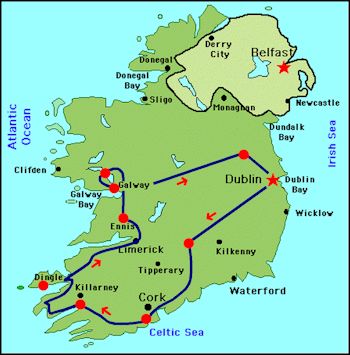 Rising above the Plain of Tipperary, this piece of high ground has always held a strategic place, literally and figuratively,
in the power structure of Ireland, evolving into one of the country's most historic sights. This complex has a character of
its own and is said to be one of the most remarkable collections of Celtic art and medieval architecture to be found anywhere
in Europe.
Rising above the Plain of Tipperary, this piece of high ground has always held a strategic place, literally and figuratively,
in the power structure of Ireland, evolving into one of the country's most historic sights. This complex has a character of
its own and is said to be one of the most remarkable collections of Celtic art and medieval architecture to be found anywhere
in Europe.
From 300 AD until the Norman invasion in the early 1100s, the Rock of Cashel was the traditional seat of the kings of
Munster At that time it was topped with an Iron Age ring fort and thatched houses. Needless to say, this high ground was fought
over by local clans for hundreds of years. It was here in 450 that St. Patrick baptized King Aengus, which is why some refer to
the spot as St. Patrick's Rock.
In 1101, the King of Munster, Muirchertach Ua Briain, cleverly donated his fortress on the Rock to the Church. This
increased his influence with the Church and prevented his rivals, the powerful McCarthy clan, from regaining possession
of the Rock. After the Rock became Church property, the permanent [stone] constuction began. Few remnants of the early structures
survive. The majority of buildings on the current site date from the 12th, 13th and 15th centuries.
At the moment, much of the site is closed off for an extensive renovation project, hence the scaffolding you see in several
of the photos. A bit of a bummer for those of us who are not likely to be back to see it after the restoration, but work that
needs to be done. Without it, in time there might be very little for people to come back and visit at all!
Just a heads-up, though -- if you ever visit the Rock, bring a jacket, no matter the season or the weather. While the views are
expansive, the site fascinating and the staff welcoming, weather conditions at the top can be far from hospitable. Even in the
summer it can be windy and cold inside the walls. That surely was the case in mid-April 2014! So be prepared but don't worry. As
Oscar Wilde once said, "There's no bad weather in Ireland, only inappropriate clothing."
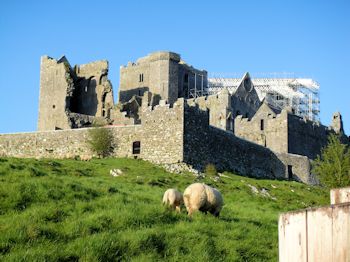
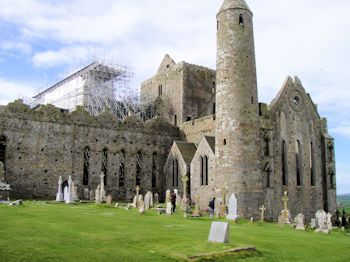
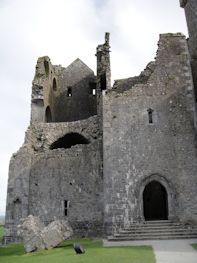
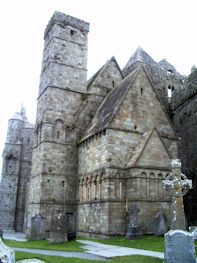
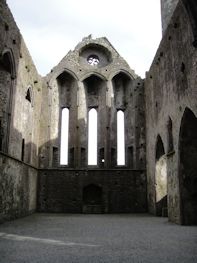
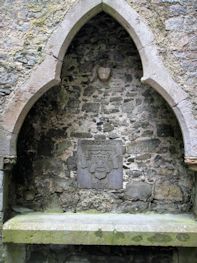
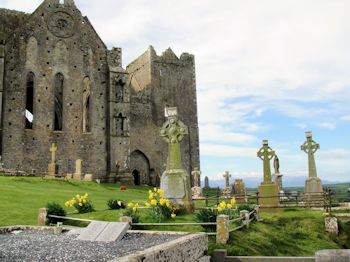
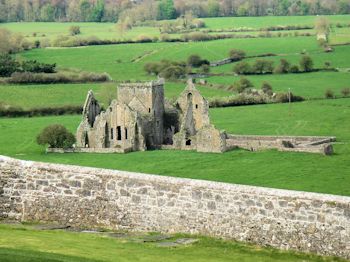
The Rock is visible for miles. Inside the walls are five different structures built at different times
between the early 1100s and the early 1400s. On the plain below the Rock is the ruins of the 13th century Hore Abbey, named for
the Cistercian monks whose simple gray robes were roughly the same color as hoarfrost.
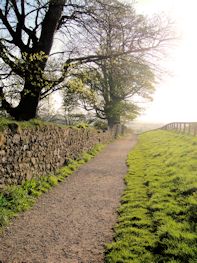
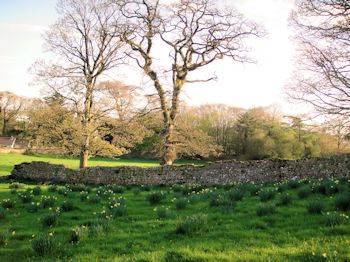
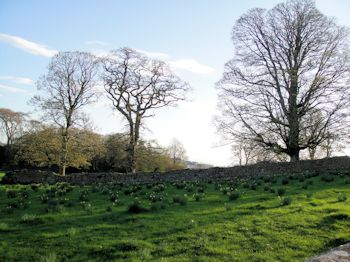
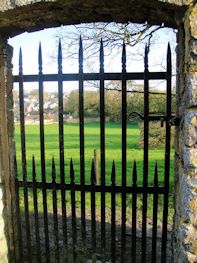
The path you see is the end of the Tipperary Heritage Trail that runs for 56 km (about 35 miles) from
the Vee Gap [a mountain pass] above the town of Clogheen to the north and ends at the Rock of Cashel. Trails like this are common
in the British Isles where landowners must allow the public walking access across their properties. Some, like the Cottswold Way
in Western England, stretch for several hundred miles. If you have several days, a sense of adventure and a sturdy pair of walking
shoes, it might be a worthwhile trek to consider.

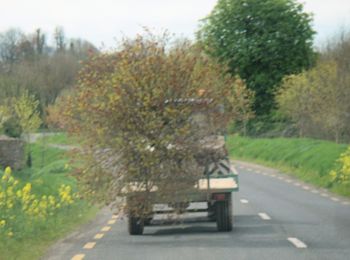
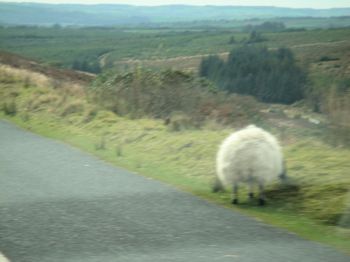
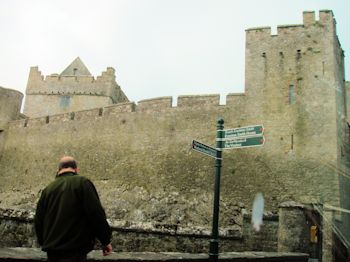
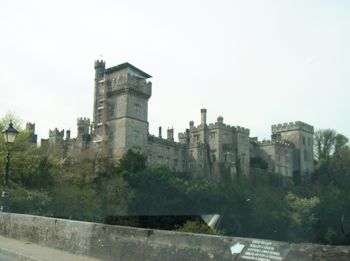
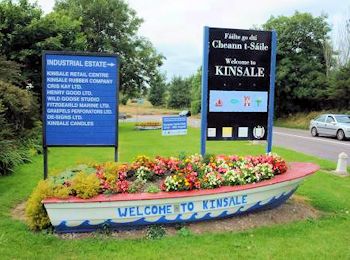
Joan, the innkeeper at our B&B in Cashel, suggested a more scenic route to Kinsale, our next stop on this
odyssey. Being ever appreciative of the advice of locals, we took her up on it. So with an appreciative glance upward to the Rock,
we slid into our little copper-colored Renault Captur and headed south. Among the sights along the way, we saw a tractor trying
(unsuccessfully) to camoflage itself with a tree, either the north side of a southbound sheep or the world's largest hairball,
several castles (the second of the two is privately owned!) and finally, official notification that we had made it to Kinsale, our
home for the next week.
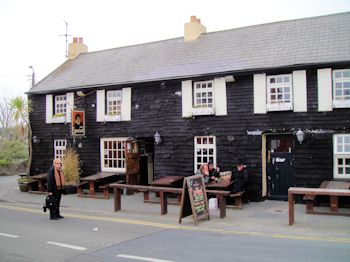
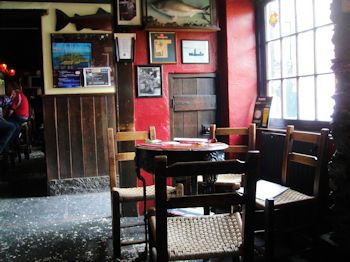
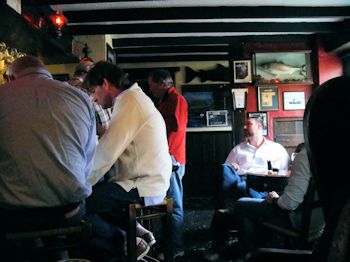
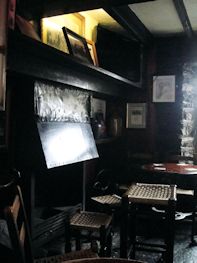
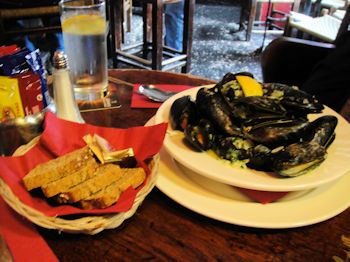
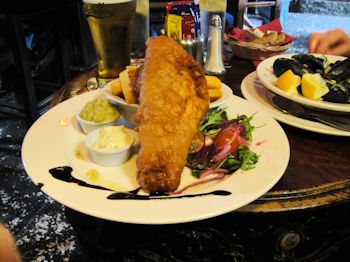
We explored the area a bit and stumbled upon The Spaniard, a restaurant and pub up on a hill just outside of
downtown. The building dates back to around 1650 and just had that "real" feel to it -- low ceilings, original beams and fireplace, a
crowd of regulars at the bar, fair prices and a decent menu. What's not to like about that? Margene went for the mussels. I
tried the fish & chips. It was all good.
 [Itinerary Page]
[Itinerary Page]
© 2014 Restaurant Doctor
 Rising above the Plain of Tipperary, this piece of high ground has always held a strategic place, literally and figuratively,
in the power structure of Ireland, evolving into one of the country's most historic sights. This complex has a character of
its own and is said to be one of the most remarkable collections of Celtic art and medieval architecture to be found anywhere
in Europe.
Rising above the Plain of Tipperary, this piece of high ground has always held a strategic place, literally and figuratively,
in the power structure of Ireland, evolving into one of the country's most historic sights. This complex has a character of
its own and is said to be one of the most remarkable collections of Celtic art and medieval architecture to be found anywhere
in Europe.























